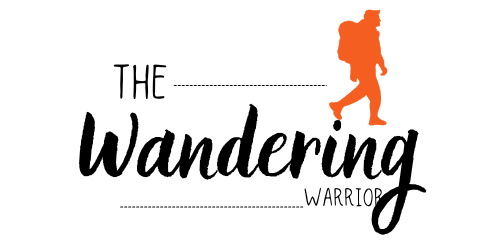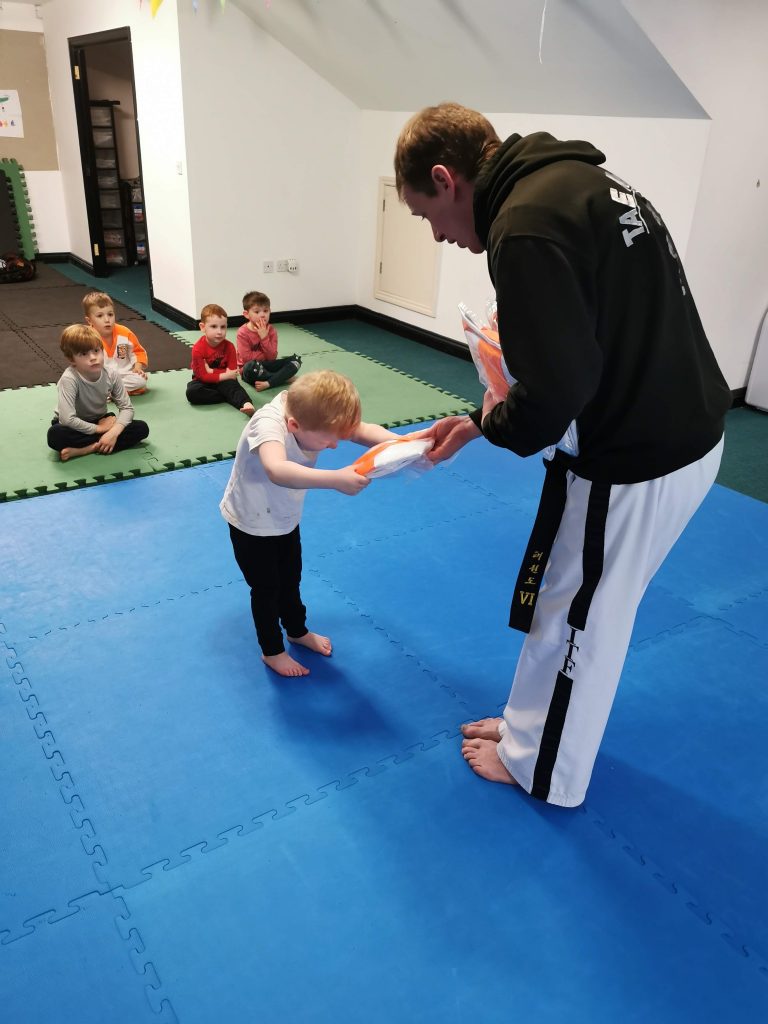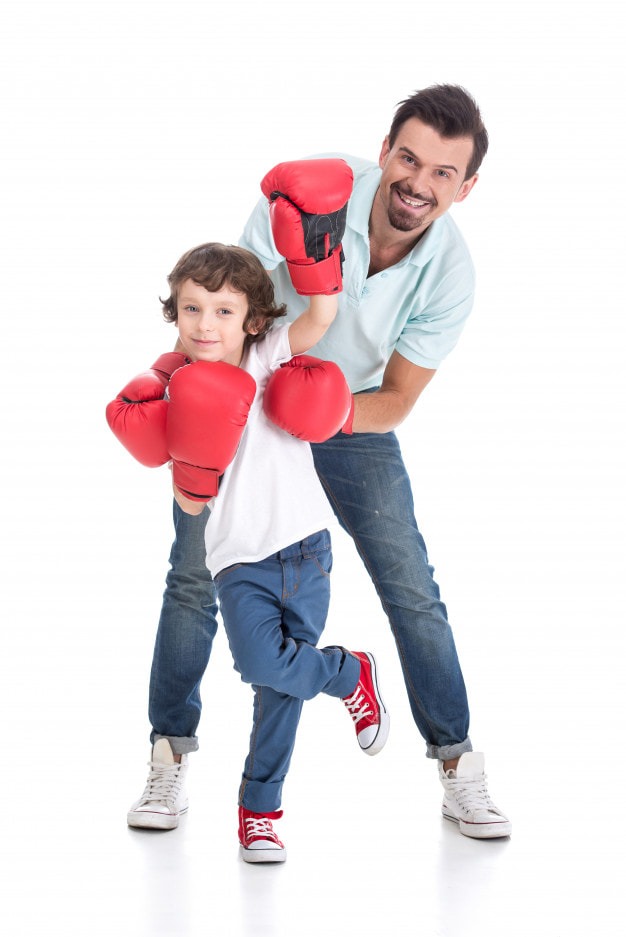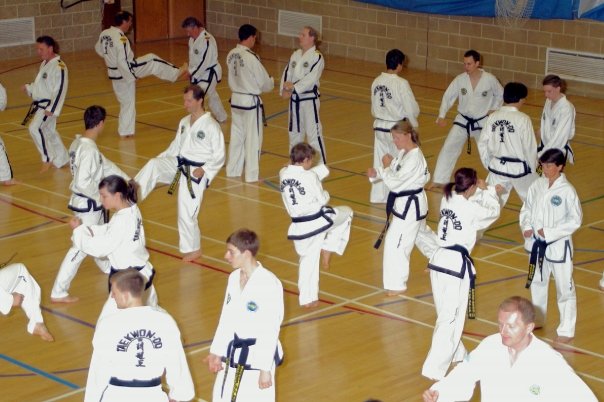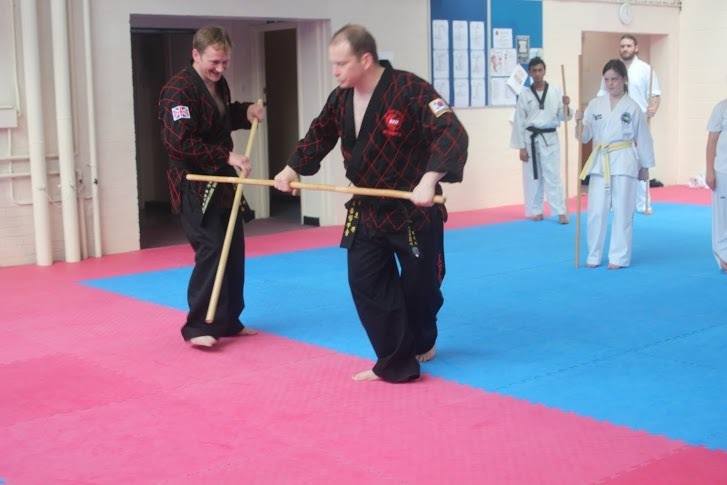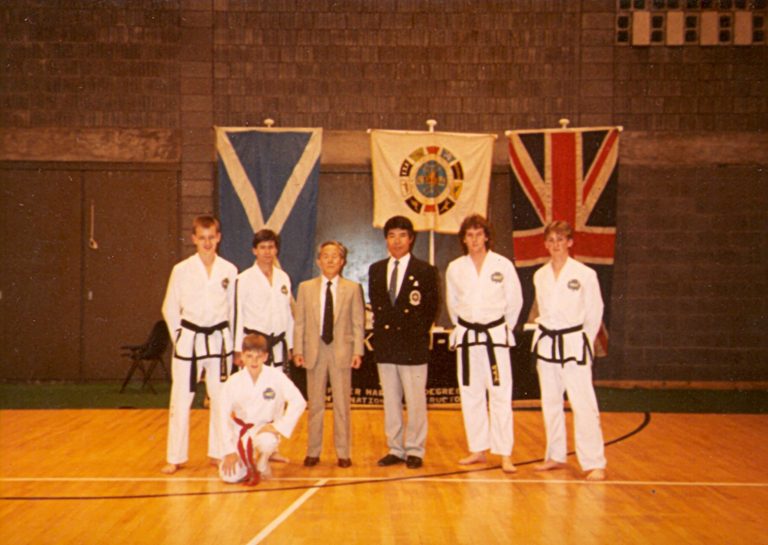Table of Contents
Conditioning the for Martial Arts will begin on your first day, though you might not notice anything on day one. The body will begin to adjust, change, mould or grow to the changes you place upon it. Like going to the gym, you might not see the changes immediately but over time (with patience and perseverance) you will notice a change; strength, stamina, muscle size or looser clothing.
Good nutrition and hydration are also part of the conditioning process. Your body won’t grow beyond what it already is if you don’t upgrade the fuel and fuel it properly.
What is Conditioning For Martial Arts?
Conditioning for Martial Arts or indeed any activity doesn’t just mean making your knuckles bigger. It’s an all-over development of the body. Yes, you need to condition the striking tools such as Knuckles, Knife hand, Ball of foot, Heel, etc but if you are not fast, flexible, strong, fit or aware enough, you won’t be able to strike the opponent anyway. I’d rather be fast, fit and aware with a sore hand than big knuckles and free ride in an ambulance (or maybe they charge you for that!).
A long distance runner is conditioning themselves for a long distance run, not just to have tough feet (see David Goggins if you want to know what Tough Feet are).
The Mind and the Body of Martial Artist (or Athlete) must be conditioned.
Conditioning for Martial Arts?
Simply train and train consistently throughout all the areas of your martial art:
- Fitness
- Strength
- Flexibility
- Awareness
- Stamina/Endurance
- Focus
All these things and more will contribute to the conditioning of your body for Martial Arts or the sport/activity you practice.
How can I Condition Myself For Martial Arts?
That question has already been answered above and you can sum it up with one word “PRACTICE!”
There, I even put an Exclamation next to it to highlight the importance of practice – in anything! If you want to learn a language, win at blackjack, beat the big boss on your games consul, win the league, fly a plane, drive a tank or get the fastest lap in a Lambo – you have to practice.
Regular practice and increased effort makes the body and mind grow. The consistency is making the mind and body think that it is important and necessary and that it must change.
Overloading The Body
A weightlifter wants to lift heavy weights. Maybe they want to be the “World’s Strongest” so they know how much they need to be able to lift in the future. Let’s just use 1000Kg as an example. Their training program isn’t likely going to be “Lift 1000kg daily.” Likewise, it’s not going to be “Lift 100Kg 10 times daily”
They first need to find out what weight they can lift. Then they follow a training program which includes nutritional changes. This plan may change several times monthly as the athlete’s body changes; Heavier weights, different repetitions, different muscles and muscle groups. It’s progressive is what I’m trying to say.
Conditioning the Brain
It was believed that the brain was fixed and had a limited storage capacity. However, they now know it changes and grows depending on what you learn, practise and put emphasis on. Simply put, when you start to learn something new, the brain begins making connections as memories of what you are learning are formed.
If you don’t keep up the practise, the brain (and body) are no longer being exerted to that that level you previously reached. It’s like they ‘believe’ those memories and bigger muscles are no longer required and so they go in the recycle bin. You can recall some of that French you learned. But not all of it. Though, over time and especially if there is no emotional connection, the memories and muscles fade a bit more.
Absorb What Is Useful, Reject What Is Not
You might not remember learning how to crawl, walk or run as a child. But you can probably crawl, walk and run without thinking about it now. The necessity to become mobile for survival was built in to all of us and although it was challenging and frustrating, our survival instinct drove us to learn.
Even though it can be fun and useful, there is no overpowering animalistic force pushing us through the the challenges and frustrations of learning a language. We are also older and are free to make our own choices as to whether we put effort in or not.
Speed/Acceleration
If you are trying to be faster, then try be faster during training. In the field of Martial Arts, this might be pad training with a partner or a bell/timer of some sort.
Your partner will move the pad around and you try to execute techniques as soon as it moves. Or when a bell goes there’s apps for that) you strike as fast as you can. Sparring with a partner faster than you is obviously less attractive, depending on how much you want to be faster. After all, being faster than a bell or a pad doesn’t really win a fight against a person.
Strength/Power
If you are trying to be stronger so that you can overpower opponents or break boards and bricks then you are going to have to build speed into the kicks and flexibility throughout your body to allow the energy to travel into the target unhindered.
Kick Higher
Trying to kick higher requires balance and flexibility in joints tissues in the legs and body. Just like the weight lifter, you know how high you can kick, you know how high you want to kick, so you need to steadily practice getting to that level.
Breaking Stuff
This is probably the section post Martial Artists get excited about. You became interested in Martial Arts because you saw someone fighting (film/tv/books), kicking high or breaking something with their hand, foot or even their head. Of course Conditioning the body for Martial Arts includes striking people, boards, bricks and other materials but it should also include taking a smack.

No doubt you’ve seen Muay Thai, MMA or even boxing. These practitioners, some exceptions, take a punches, kicks, elbow and knee strikes. And it hurts. Yet, they are able, up to a point, keep fighting back. They train with this type of impact all the time, so their body can become conditioned to it.
Conditioning Knuckles for Martial Arts
When I first started formal training in Taekwondo (all those years ago), I was classes as an adult. So from day 1, I was required to do press-ups on my knuckles. It was painful, uncomfortable and hard to bear at the beginning.
But haven’t I already talked about this earlier? Perseverance, Effort and what you are willing to do to achieve what you want/dream, your goal(s). You might call this a Warrior Mindset or Conditioning of the Mind and Body.
I decided I would push myself through the pain and discomfort. Whenever I had to get up from a chair or the floor, I would use my knuckles instead of my palm to get up. Squat thrusts, use the knuckles instead of the palm. Lean against wall, open a door, use the knuckles. Calluses started to grow on the skin and I can only assume that the bone in the knuckles were changing form too.
This exercise is not just for skin and bone, it’s also for the wrist, forearm, shoulder and beyond as you prepare for striking a target. Pushing and lowering your body on your knuckles is one thing, but punching a person or inanimate object (boards and bricks, etc) is another.
Technique Nil, Lamppost 1
Being the naïve and slightly impatient teenager that I was, I decided my knuckles were ready to break anything and everything. I don’t think I actually believed my incredibly strong, invincible hulk-like smashing punch would even dent the lamppost but I do remember that I was angry at a bully who was shouting abuse at me. It hurt like hell, the impact with the lamppost, not the words. But I could not show any kind of weakness or pain at that moment. Plenty of time for that later when I was out of sight.
Lesson learned. The impact of the punch should be spread across both of the first two Knuckles (fore fist). It was clear from the balloon on my hand that the middle knuckle had taken the full impact during lamppost-gate. I had forgotten one of the basics of Punching. Learning through your mistakes is one way but learning to prevent mistakes is better.
Why Are You Conditioning?
It takes from a few hours to several months to forge a traditional samurai sword (Katana). But when your life depends on it, is it really a decorative piece you want or a weapon?
For the serious student, you will condition the whole body and the mind but many students just want to get their black belt, fight people and/or break stuff.
Fighting, or Sparring: The body must be ready to compete and take knocks, even if it “non-contact” sparring. Shins, Knees, Arms make contact but so too do the ribs, face and torso. You’ll condition them through impact of course. But who likes being hit?!
Power/Destruction: Knuckles, Knife hand, Elbows, Feet and what ever else you ned to break stuff with.
You condition your weapons to take impact and you need impact to condition your weapons. You start off with light impact and low repetition. The frequency and force will increase but this takes time. You don’t want to injure yourself!

In the days before plastic and martial arts supplies stores, martial artists made do with equipment like the Makiwara in Japanese, or the Kwon Go, or Dallyon Joo (striking post) in Korean are there for you to strike.
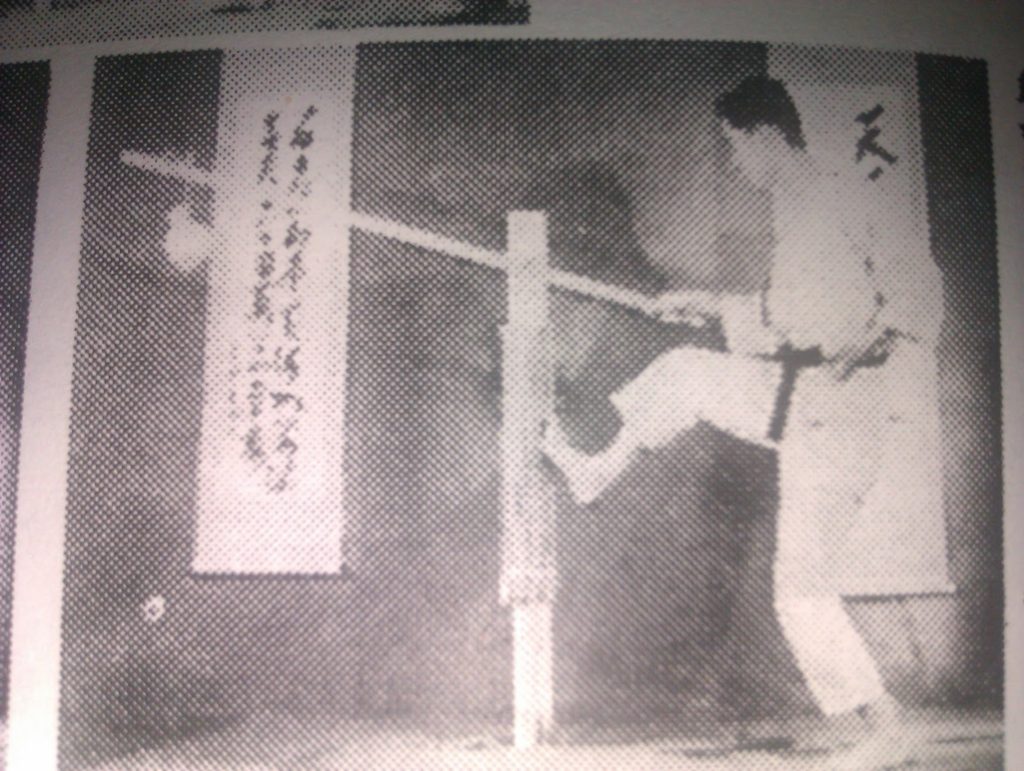
By repeatedly striking the hand or foot against the surface of the bag or forging post, you are conditioning the skin and increasing the density of bone and fibres. Going through discomfort and pain, you forge the mind to take pain and push the barriers. Another good reason to go light and slow – until your threshold for pain changes – a bit like stretching.
Listen to your body. When it hurts or becomes unbearable, it’s probably time to stop hitting the target.
Conditioning Remedies
Rest is a good remedy for fatigue, bruising and inflammation. And drinking plenty of water. Just like training or working-out, your body needs to rest and repair. Repeatedly striking a target, for example your knuckles, will make them tender and bruised. So remember to take time out from conditioning too.
There are several products available that reduce swelling and bruising. You’ve probably heard of Tiger Balm which is great for Muscle Aches and Pains, but here are some other remedies:
- Ice
Apply ice to the bruised area as soon as possible. This can reduce the size of your bruise, which may allow it to heal faster. The cold temperature from an ice pack reduces blood flow blood in that area. Don’t apply directly to the skin. - Arnica
The go to remedy for bruises that gives some pain relief as contains anaesthetic. - Heat
If the bruise has already formed, you can apply a heat pad, hot water bottle or even soak in a bath to help clear trapped blood under the skin and increase circulation. - Dit Da Jow (Linament)
This can help stop pain and start the healing process. They claim it speeds up the regeneration of broken bone tissue. - Friction/Rubbing
A slightly more painful option, but it works. Use some liniment to moisten the bruised area, then apply deep pressure and massage from the centre and out towards the outside of the bruise. The aim is to move the stagnant blood away from the site of the trauma.
If you need more information on these remedies and treatments, consult your GP (if you can get one!) or check out the WebMD or the Healthline sites.
Try Audible Free for 30 days
If you haven’t got Audible, you will see an offer to try Audible Free for 30 days. Plenty of time to read at least one title 😉
This page contains affiliate links. If you choose to purchase after clicking a link, I may receive a commission (pennies) at no extra cost to you.
